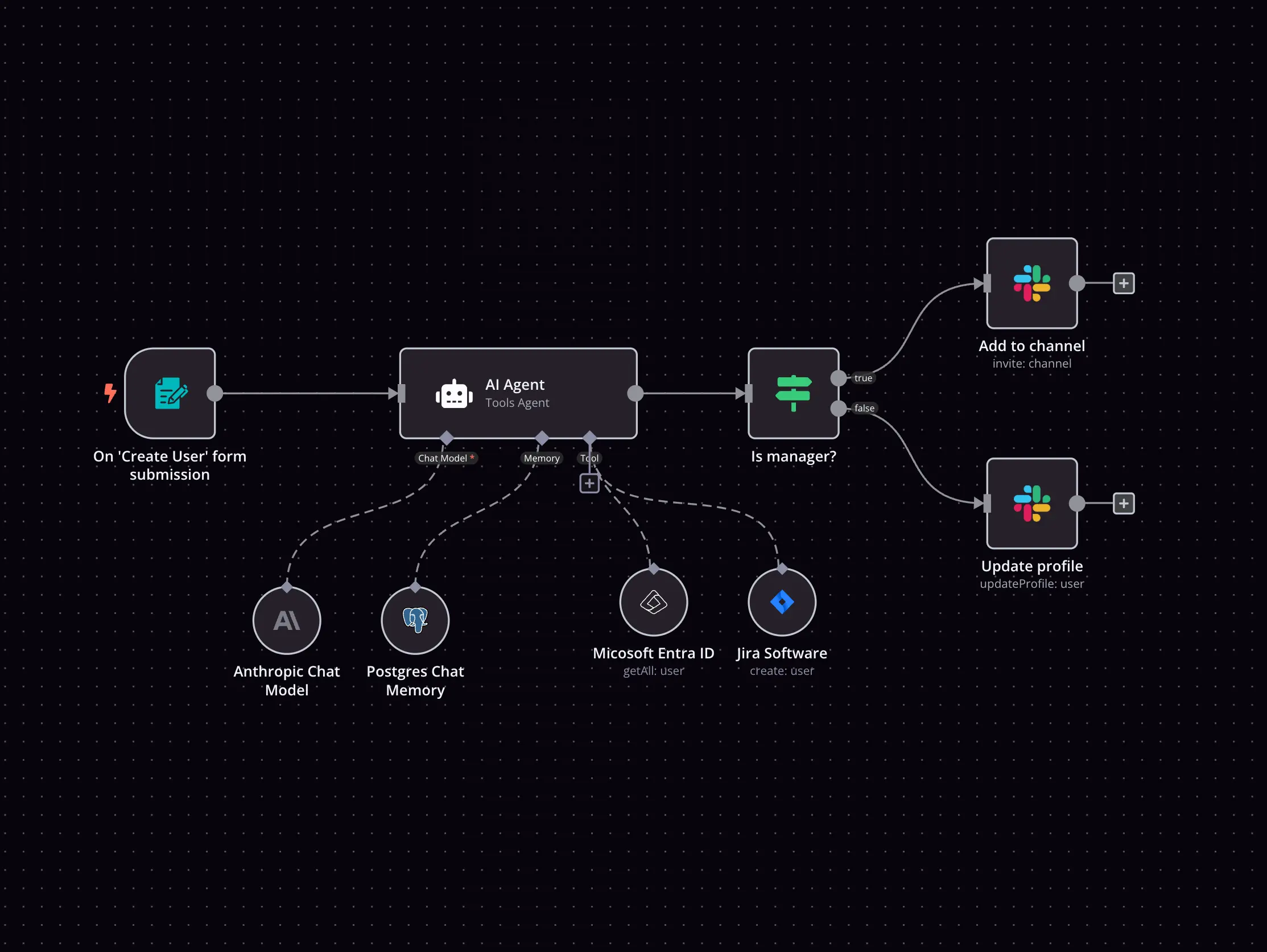Google Gemini Chat Model and Microsoft Outlook integration
Save yourself the work of writing custom integrations for Google Gemini Chat Model and Microsoft Outlook and use n8n instead. Build adaptable and scalable AI, workflows that work with your technology stack. All within a building experience you will love.
How to connect Google Gemini Chat Model and Microsoft Outlook
Create a new workflow and add the first step
In n8n, click the "Add workflow" button in the Workflows tab to create a new workflow. Add the starting point – a trigger on when your workflow should run: an app event, a schedule, a webhook call, another workflow, an AI chat, or a manual trigger. Sometimes, the HTTP Request node might already serve as your starting point.
Popular ways to use the Google Gemini Chat Model and Microsoft Outlook integration
Generate Monthly Financial Reports with Gemini AI, SQL, and Outlook
Parse Incoming Invoices From Outlook using AI Document Understanding
📈 Receive Daily Market News from FT.com to your Microsoft outlook inbox
AI-Powered Candidate Shortlisting Automation for ERPNext
Automated Invoice-PO Matching with Google Gemini AI and Email Notifications
Automate Cryptocurrency Analysis & Reports with Google Gemini and CoinGecko Email Alerts
Build your own Google Gemini Chat Model and Microsoft Outlook integration
Create custom Google Gemini Chat Model and Microsoft Outlook workflows by choosing triggers and actions. Nodes come with global operations and settings, as well as app-specific parameters that can be configured. You can also use the HTTP Request node to query data from any app or service with a REST API.
Microsoft Outlook supported actions
Create
Create a new calendar
Delete
Delete a calendar
Get
Retrieve a calendar
Get Many
List and search calendars
Update
Update a calendar
Create
Create a new contact
Delete
Delete a contact
Get
Retrieve a contact
Get Many
List and search contacts
Update
Update a contact
Create
Create a new email draft
Delete
Delete an email draft
Get
Retrieve an email draft
Send
Send an existing email draft
Update
Update an email draft
Create
Create a new event
Delete
Delete an event
Get
Retrieve an event
Get Many
List and search events
Update
Update an event
Create
Create a mail folder in the root folder of the user's mailbox
Delete
Delete a folder
Get
Retrieve a folder
Get Many
Get many folders
Update
Update a folder
Get Many
Retrieves the messages in a folder
Delete
Delete a message
Get
Retrieve a single message
Get Many
List and search messages
Move
Move a message to a folder
Reply
Create a reply to a message
Send
Send a message
Send and Wait for Response
Send a message and wait for response
Update
Update a message
Add
Add an attachment to a message
Download
Download an attachment from a message
Get
Retrieve information about an attachment of a message
Get Many
Retrieve information about the attachments of a message
Google Gemini Chat Model and Microsoft Outlook integration details
Google Gemini Chat Model
Google Gemini Chat Model node docs + examples
Google Gemini Chat Model credential docs
See Google Gemini Chat Model integrations
Related categories
Microsoft Outlook
Microsoft Outlook is a professional email service offered by Microsoft. It serves as an information manager, calendar, task manager, note-taker, and much more. It is widely used by individuals and businesses across the world.
Microsoft Outlook node docs + examples
Microsoft Outlook credential docs
See Microsoft Outlook integrations
Related categories
FAQ
Can Google Gemini Chat Model connect with Microsoft Outlook?
Can I use Google Gemini Chat Model’s API with n8n?
Can I use Microsoft Outlook’s API with n8n?
Is n8n secure for integrating Google Gemini Chat Model and Microsoft Outlook?
How to get started with Google Gemini Chat Model and Microsoft Outlook integration in n8n.io?
Looking to integrate Google Gemini Chat Model and Microsoft Outlook in your company?
The world's most popular workflow automation platform for technical teams including
Why use n8n to integrate Google Gemini Chat Model with Microsoft Outlook
Build complex workflows, really fast


